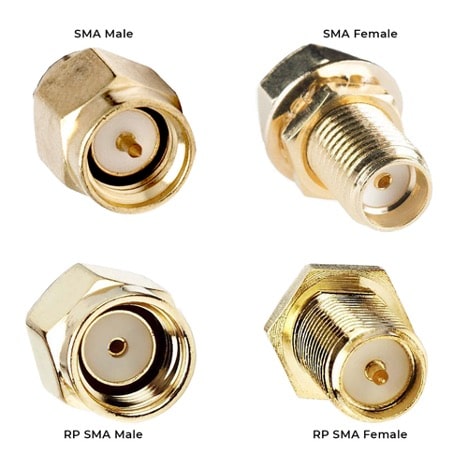The most common connector depends on the specific application and industry. However, SMA (SubMiniature version A) connectors are widely used in various fields and are considered one of the most common RF connectors.
SMA connectors are commonly found in telecommunications, RF systems, cable assemblies, and many other applications. They provide a reliable and robust connection for transmitting high-frequency signals. SMA connectors are used in devices such as antennas, wireless communication equipment, test and measurement instruments, and military and aerospace applications.
Their popularity is due to their excellent electrical performance, compact size, and threaded coupling mechanism that ensures a secure electrical connection. SMA connectors are capable of handling high frequencies, typically up to 18 GHz, although variants exist that can handle higher frequencies.
There are many other connector choices other than SMA. Connectors such as BNC, N, and TNC also have their specific applications and are common in certain industries. The choice of connector ultimately depends on factors such as frequency requirements, power handling capabilities, size constraints, and compatibility with other devices in the system.
Just because it looks like and SMA doesn’t make it an SMA. A variant of the popular SMA is the Reverse Polarity SMA (RP-SMA). These connectors are used in certain applications to prevent accidental mating with standard SMA connectors. The main reason manufacturers use RP-SMA instead of regular SMA connectors is to ensure compatibility and prevent unauthorized connections. This gives manufacturers a sense of propriety from generic SMA counterparts.
The primary application for RP-SMA connectors is in wireless communication systems, particularly in Wi-Fi devices. These connectors are often found in Wi-Fi routers, access points, antennas, and wireless network cards. The use of RP-SMA connectors helps to ensure that only authorized antennas or devices are connected to the Wi-Fi system.
The only difference between RP-SMA and regular SMA connectors is the arrangement of the inner and outer conductors. In RP-SMA connectors, the polarity is reversed compared to regular SMA connectors. This means that the RP-SMA male connector has a female pin (hole) in the center and a internally threaded outer sleeve, while the regular SMA male connector has a protruding male pin in the center and a internally threaded outer sleeve.
By using RP-SMA connectors, it becomes more difficult for unauthorized or incompatible antennas to be connected to Wi-Fi systems. This is especially important in commercial settings, where controlling and managing the wireless network infrastructure is crucial for security and performance.
It’s worth noting that RP-SMA connectors are not standardized by organizations like the International Electrotechnical Commission (IEC) or the Telecommunications Industry Association (TIA). Therefore, their usage is not as widespread as regular SMA connectors. Whether you need and SMA or RP-SMA MP Antenna can provide a multi-polarized antenna solution designed with either connector for your specific application.

